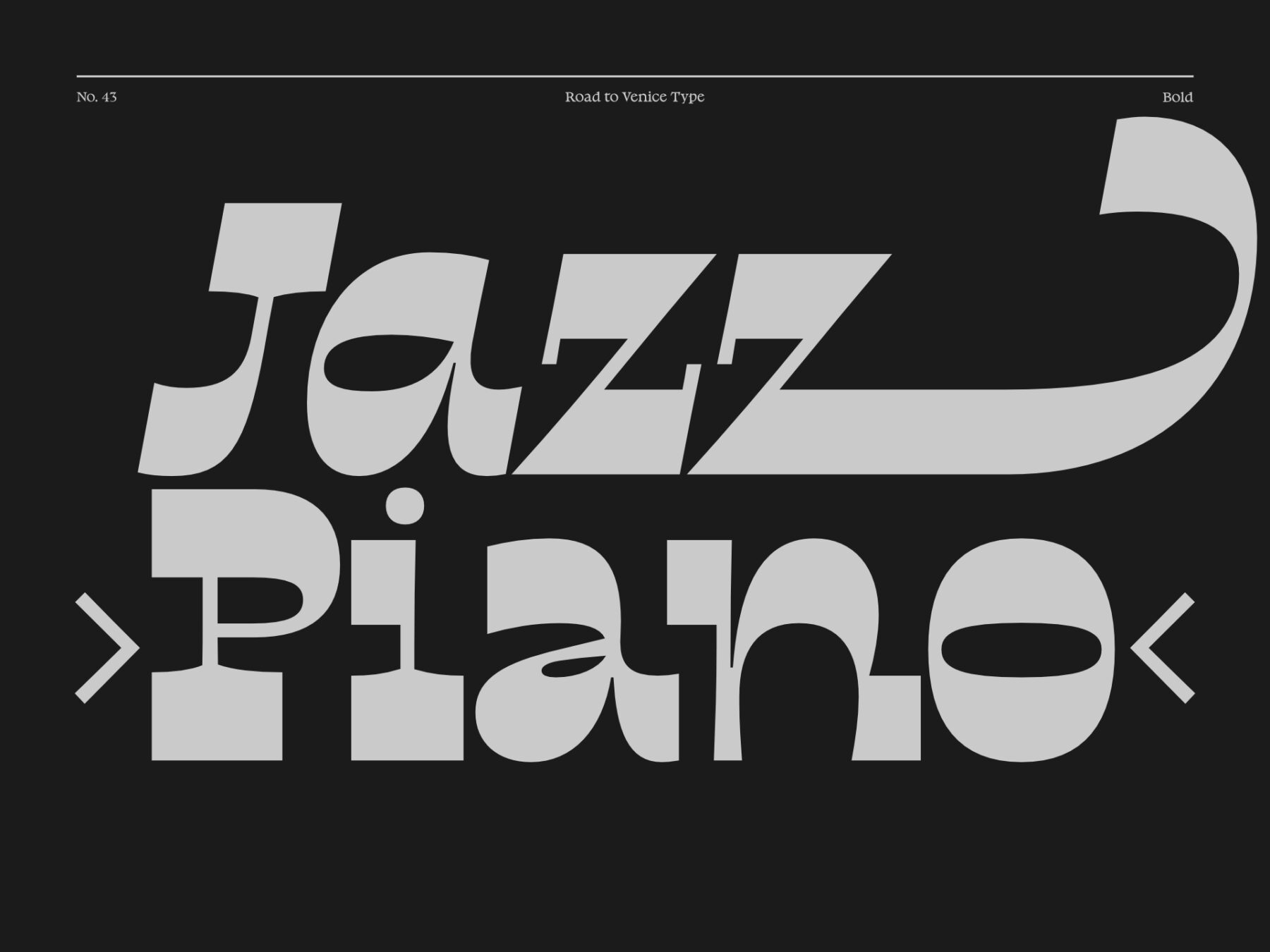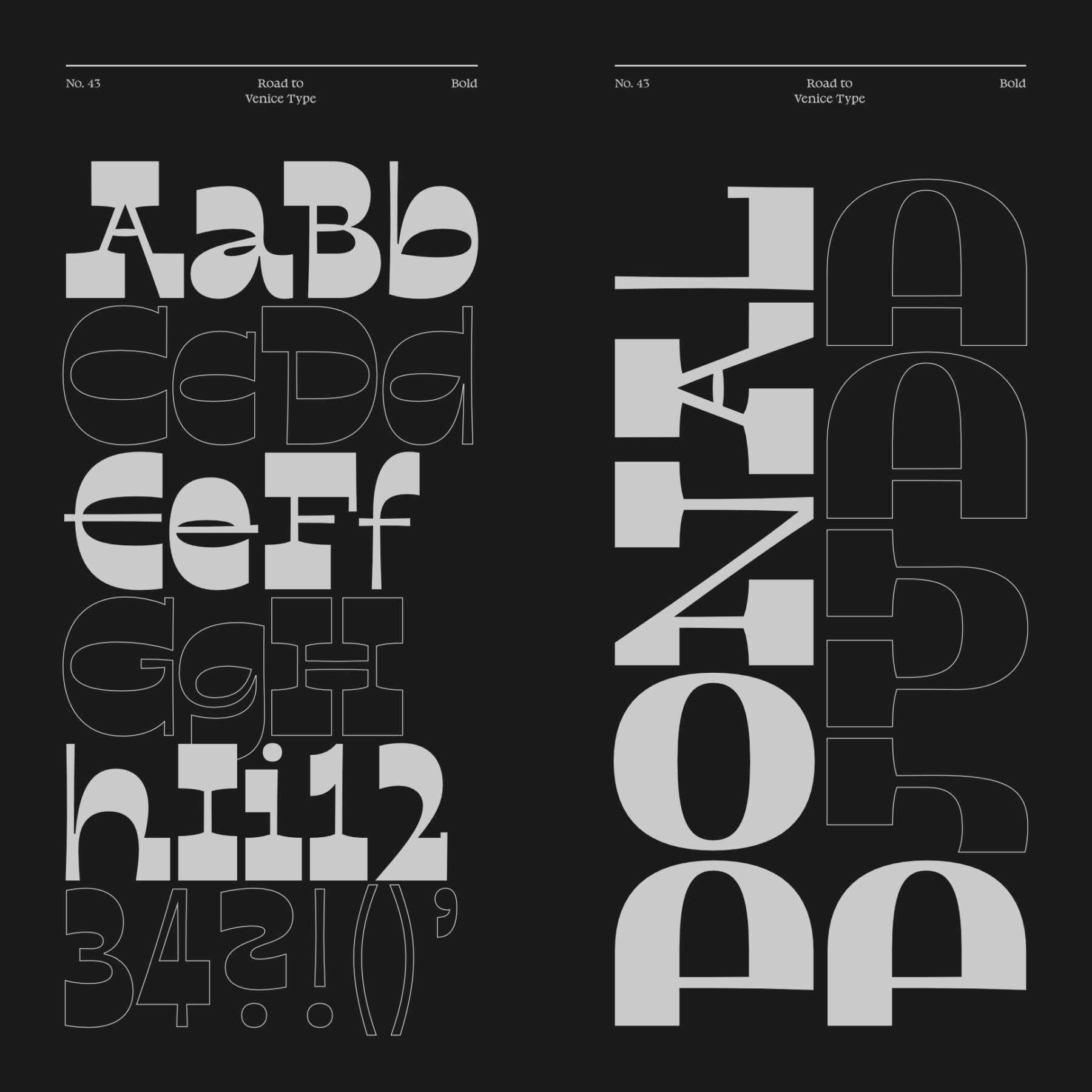
No. 43
A Reverse-Contrast with Writing Influence
No. 43 is a display typeface suited for packaging, boards, signs and digital and analogue titling. It combines two major influences, one is writing with a broad nib pen and holding it at a very steep angle and the second is writing with a pointed nib pen.
The reverse-contrast type as we know it today came up in the period of the Mechanistics, think of Rockwell as a well known contemporary. The precise reasons for its inception are obscure to us, some argue that the shift happened as a thought exercise, as in why not thin out the stem instead of the serifs, like Didot did? Nevertheless, there is another way to arrive at a reverse-contrast typeface, that is to say in turning the nib vertically and following the skeleton of the letters.
In No. 43, for example, the terminal of the uppercase R mimics the gesture of making a bent stroke. The difference to an abstracted serif becomes more obvious when uppercase R and H meet, or lowercase e and i. No. 43 combines both approaches, the abstractionist and the manual, embracing a state of ambiguity.
Design
Road To Venice Type
Weblog
Die Bedeutung von Farbtheorie und Technologie bei der Wahl einer Webhosting-Plattform
Zwischen Haptik und Storytelling: Die Verpackung als multisensorisches Erlebnis
Die neuesten Fortschritte in der Hörtechnologie
Jenseits der großen Namen: Die Kunstszene der Zukunft entdecken
Die Kunst hinter dem Design
Blockieren EMAs den Kursanstieg von Dogecoin?
Webdesign und Entwicklung neu gedacht: Strategien für digitale Erfolge
Interaktive Erlebnisse schaffen: Die Zukunft des UX-Designs
Die Zukunft der Arbeitsplatzgestaltung: Ergonomie und Effizienz vereint
Mehr Nachhaltigkeit im Alltag: Produktdesign, Verpackungen & Abkehr von der Wegwerfgesellschaft!
Design-Trends 2025: Was erwartet kreative Köpfe in Deutschland?
Innovative Fertigungstechnologien: Der Einfluss auf das moderne Design
Der neue Minimalismus: Warum der Landhausstil wieder als Statement gilt
Nachhaltiges Design: Was steckt hinter der umweltbewussten Produktgestaltung?





